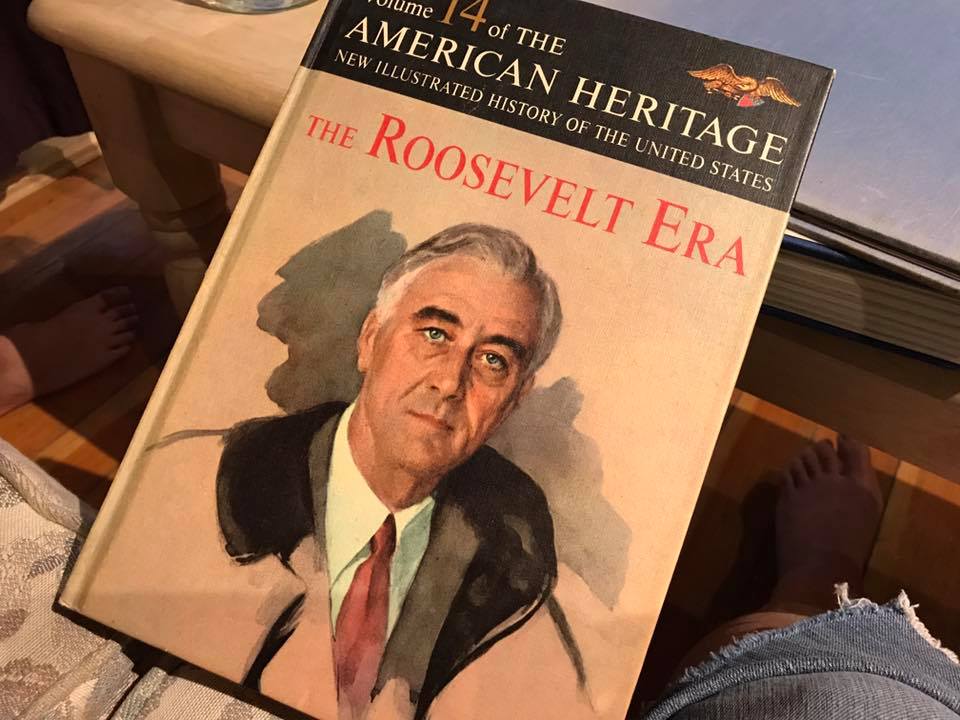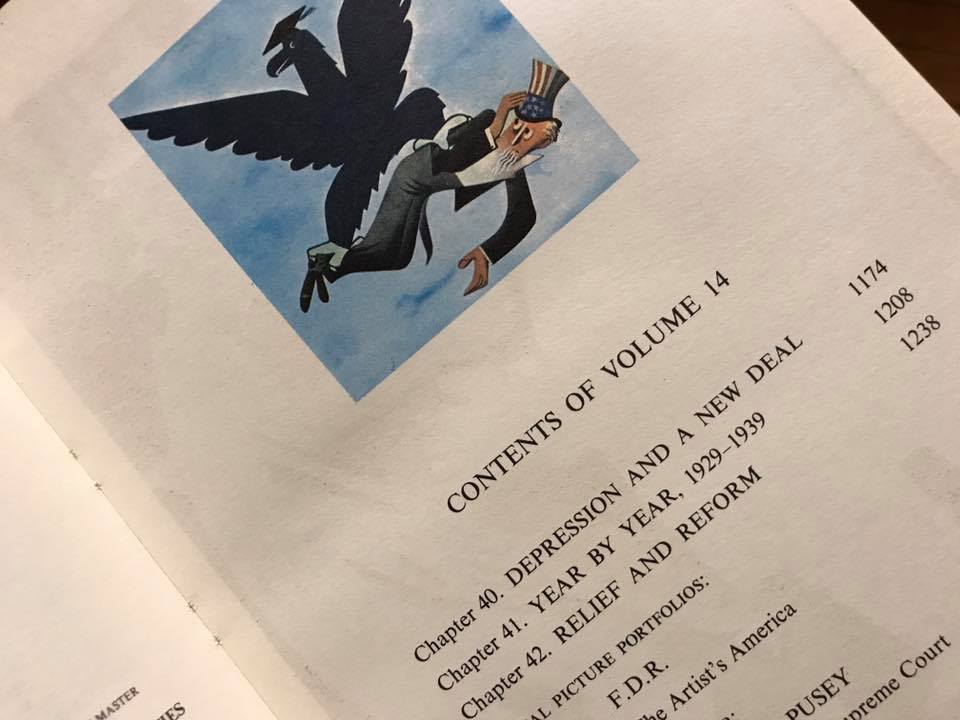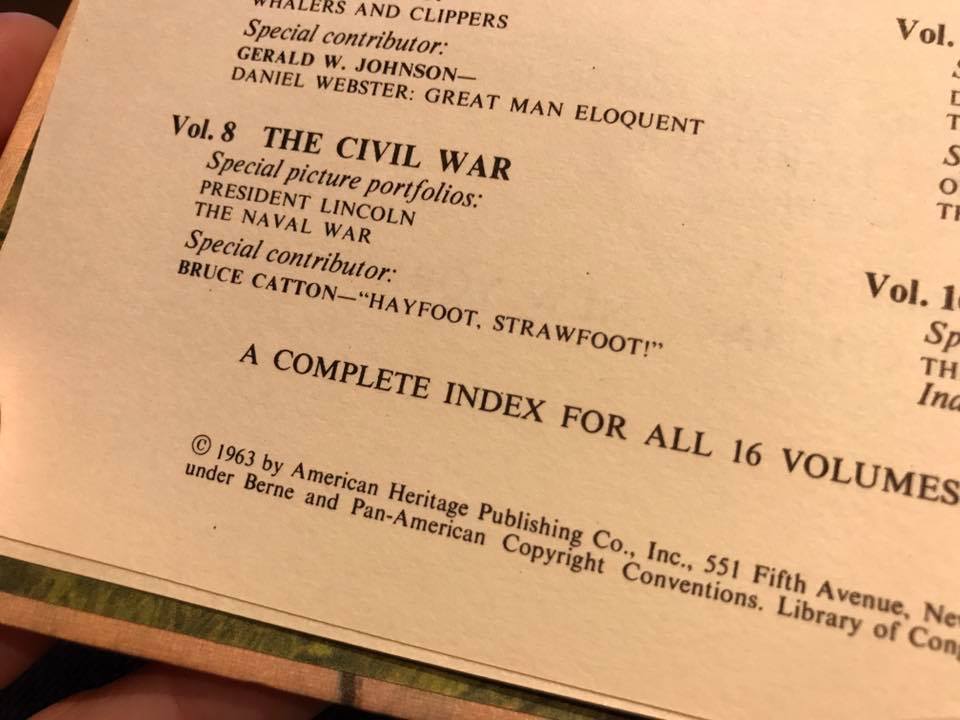#Leaded: 1963 Hardcover Printing of “Volume 14 of The American Heritage New Illustrated History Of The United States; The Roosevelt Era”
Most vintage books have at least some amount of lead. The amount of lead that is considered toxic in a modern item manufactured and intended to be used by children is 90 ppm or higher in the coating (or paint) and 100 ppm (or higher) in the substrate.
This 1963 printing of “The Roosevelt Era” (a “free-pile” find here on the streets of Portland several years ago!) was positive for lead at levels as high as 221 ppm. Since I tested this book I have stopped letting my children read it, although I have held onto it and may read it to them (if they show interest) with thorough hand washing after.
Simple Solution: New books are generally lead-free. Given my children’s disabilities we also LOVE books-on-tape. Here’s a post with some of our favorite (very well done) books on tape! [They are great for road trips too!]
If you appreciate my independent consumer goods testing and childhood lead poisoning prevention advocacy work, please consider chipping in (here) so I can keep doing what I do! Thank you!
As always, if you have any questions – please let me know!
Tamara Rubin
#LeadSafeMama
Never Miss an Important Article Again!
Join our Email List






Hi Tamara,
Thanks for the work that you do! Sorry if you have mentioned this elsewhere & I have missed it, but I’m wondering where exactly the lead is in the vintage books? Is it potentially in all the inks, the cover as well as the text? What about those books with the cloth like covers, are they covered in potentially lead containing paints? And do you think painted hardcovers (I assume they have some kind of varnish over the top of the paints) are potentially bad as well? And do you know how high the risk is of this lead coming off on your hands?
I have been a small collector of old books, it’s hard to think about getting rid of them. I don’t have any kids to worry about getting ahold of them though, but I also care about my health.
thanks so much
In vintage books (and here’s my category of posts for vintage books that you can look through: https://tamararubin.com/category/vintage-books/. the lead is in both the ink of the pages (usually at lower levels) and the paint and colorants on the covers (cloth, leather, paper.) The covers tend to be higher lead relative to the lead levels in the ink on the same book. Painted hardcovers are worse than paperbacks, generally the vintage paperbacks (and comic books) I have tested have lower lead levels than the hardcovers. I think the risk of the lead coming off onto your hands is very high because of the mere nature of old paper. Old paper is fragile and worn and generally dusty. I would (as a first step) keep your collection behind glass in a cabinet if you can. The first sign that there is potential deterioration and potential exposure hazards from old books is the smell. That “old book smell” usually means there are some particulates getting into the air. If you tested many of the hardcovers with a swab they would likely test positive for lead that way too- but because they are paper that could damage the book. I think vintage/historic/antique books have a place, but the best place for them is in a museum. It tends to be the most difficult thing for people to confront. (It’s so much easier to get rid of all of the other things! I have had mothers of lead poisoned children say that that is the one thing they refuse to get rid of.) I used to have a lot of vintage/historic books. We lost everything in a home fire in 2002 and the books fueled our fire (we had thousands of books between us – my husband and I had just gotten married and moved in together before the fire, merging two fairly extensive collections) – so that left us without any books, which in retrospect was a very good thing.